Is there a need for change?
HTC Corporation is in a precarious situation.
The corporation is challenged with three major problems.
The problems of HTC Corporation include weak organisational structure, misplaced objectives, and employee’s performance (Triggs 2013).
Strategic operations management influences a strong organisational structure.
A major turnaround will be determined by employee’s inclusion in change management.
The corporation must align its visions with market trends (Triggs 2013).
However, communication is the major tool in the decision making process.
Thus, there is a need for change in HTC Corporation.
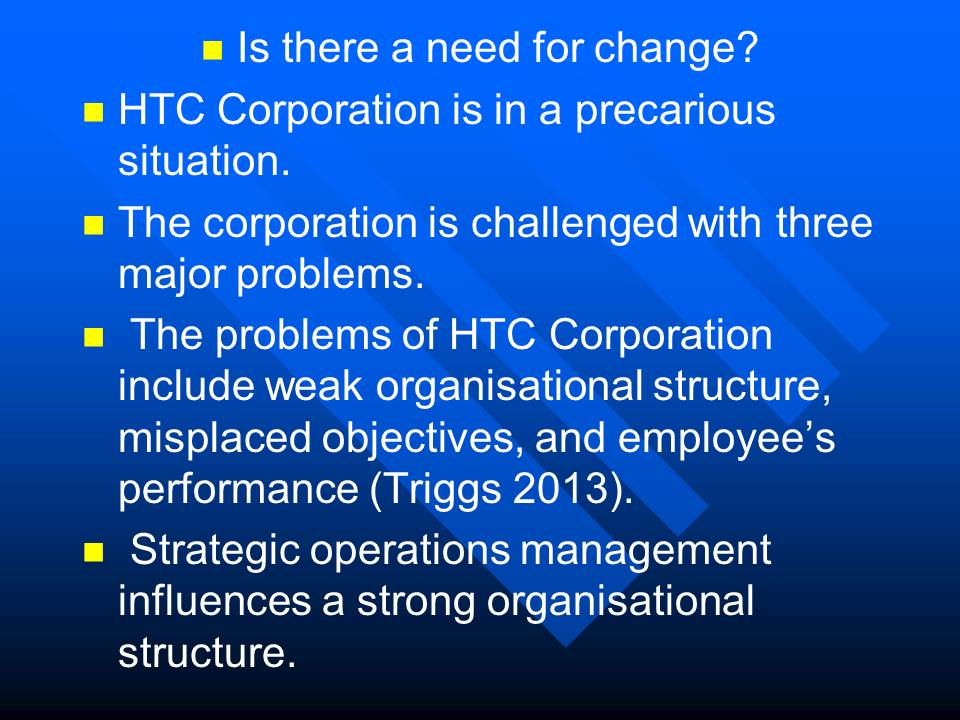
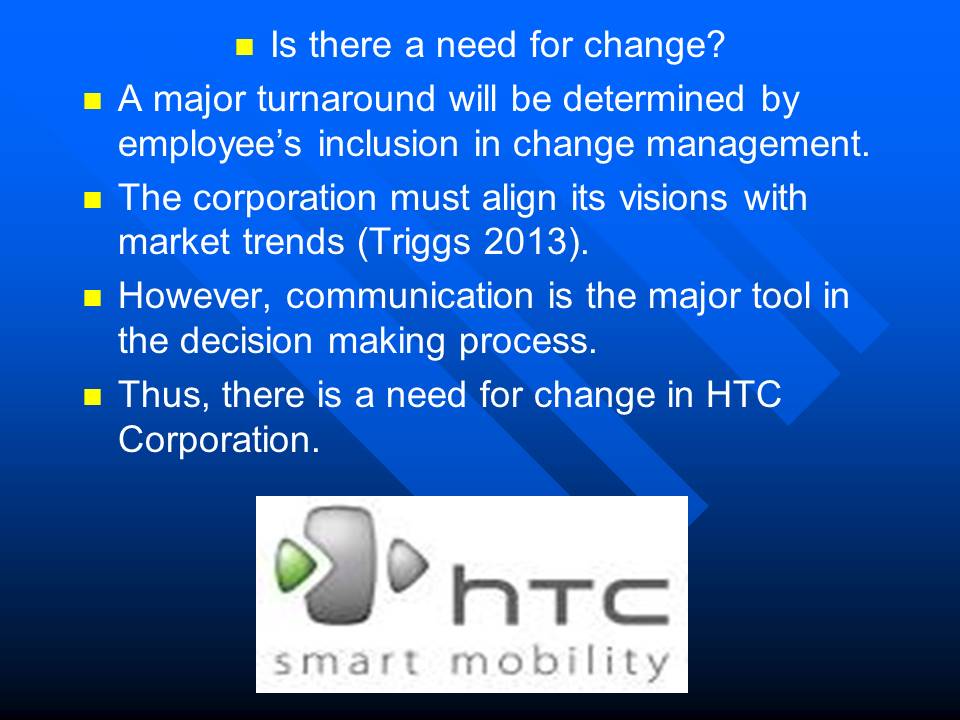
Organisation development practitioner
- Organisational change can be structural, group, or individual.
- Organisational change can be internal or external.
- Internal change can be technical, political, and organisational.
- Technical change includes quality, innovation, and quantity.
- Political change includes succession, leadership change, and company policy.
- Organisational change includes culture, values, the socialisation process, and norms.
- External change is influenced by social, market trend, technological, and political stimulus.
- Thus, change management will improve performance and market growth.
- However, organisational change comes with resistance.
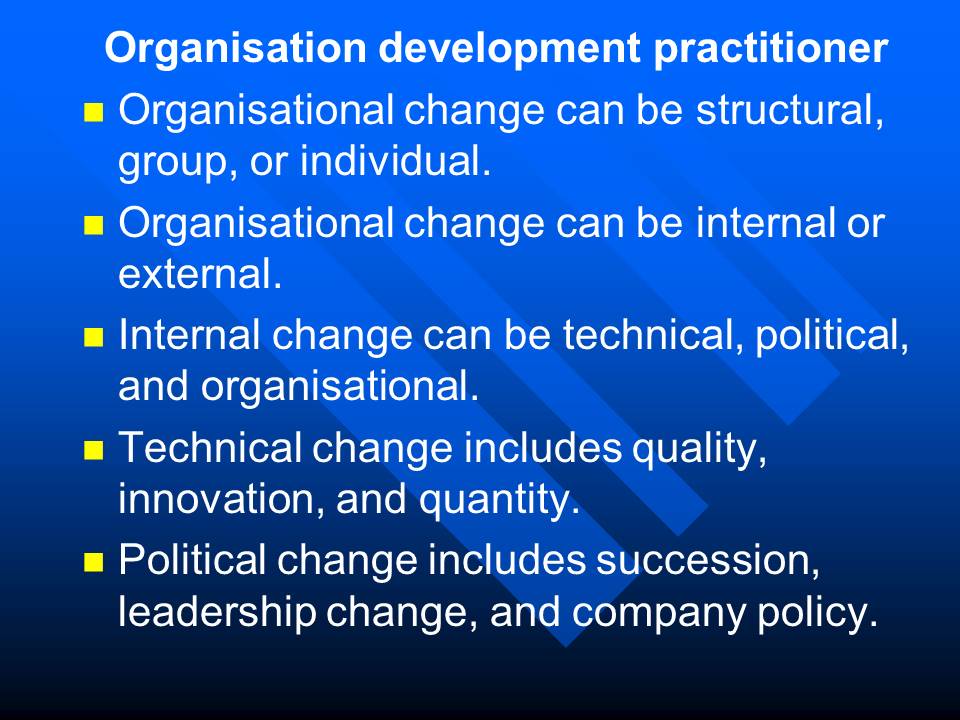
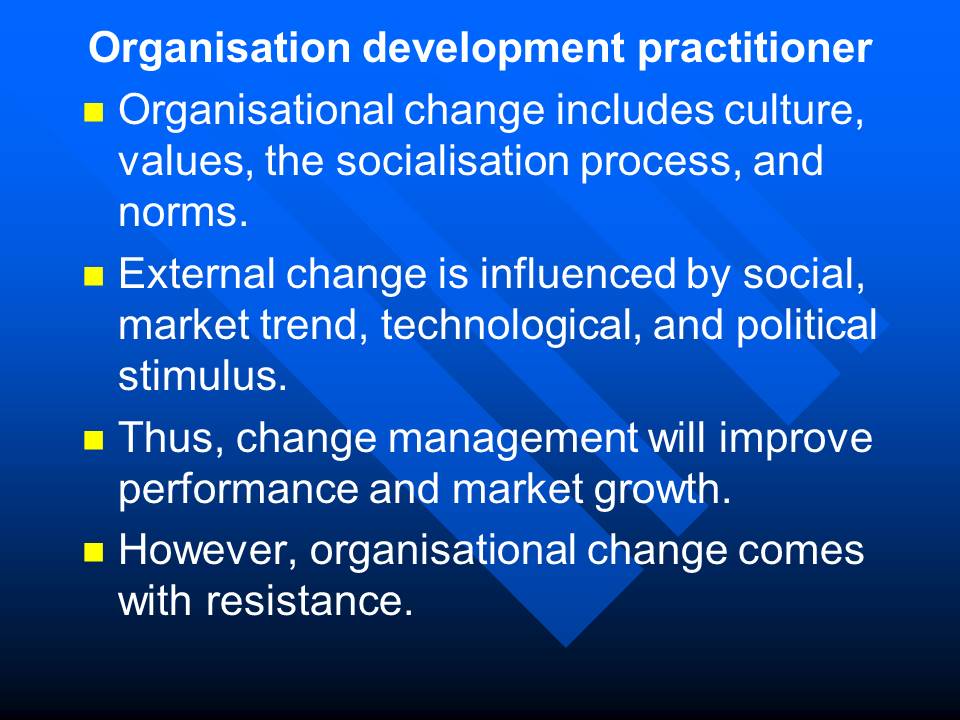
Practitioner and client relationship
As a development practitioner, I would ensure that the organisation meets five requirements.
- Define the strategic change.
- Employee’s inclusion in the decision making process.
- Feeling of the employee during change.
- Attitudes of employee during change.
- Perception of employee during change.
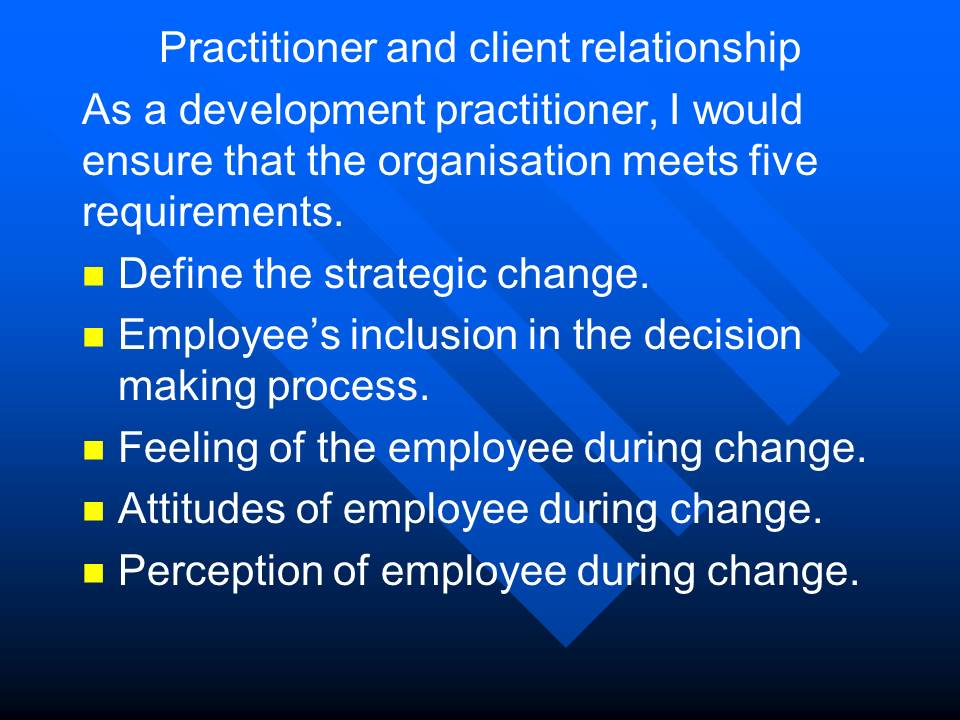
Organizational problems
- Bureaucracy in the firm’s internal and external operations restricted its growth potential.
- Lack of multidisciplinary skill affected the employees.
- Talented employees in HTC Corporation lost their relevance (Wagstaff & Jim 2013).
- Employee dissatisfaction led to mass resignations.
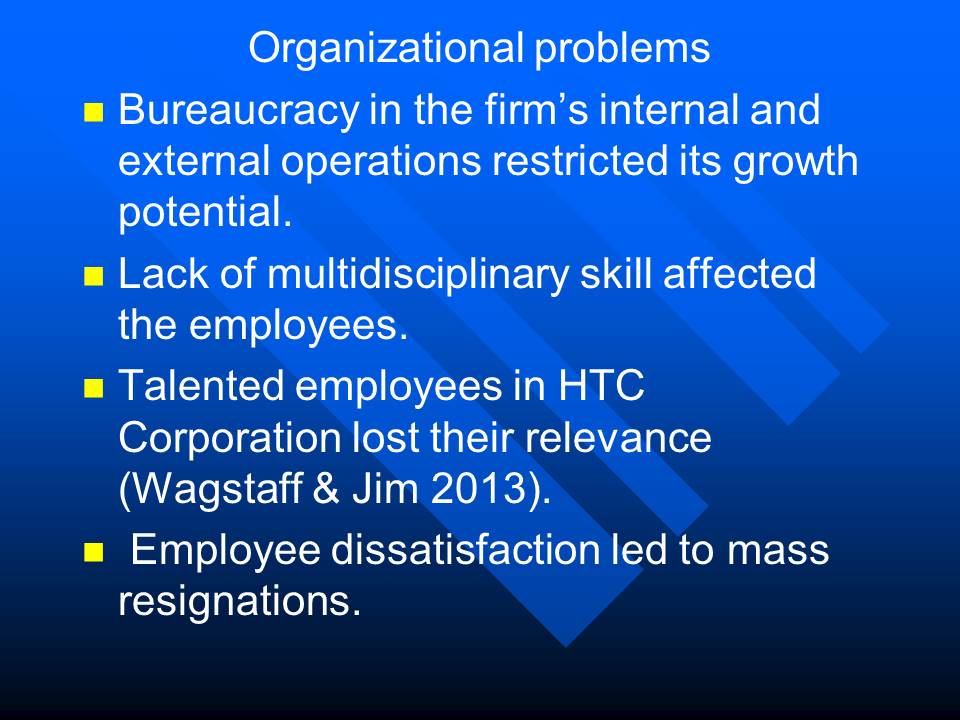
Organizational problems in HTC Corporation
Talent management was not a priority in the organization.
Inadequate marketing strategy affected product sale.
Thus, to facilitate change I will educate, communicate, negotiate, participate, and manipulate all the agents of the organisational change (Wagstaff & Jim 2013).
HTC Corporation had three major issues.
The corporation had an inefficient leadership structure.
The operations manager could not align the company’s objectives with daily transactions.
Consequently, a weak organisational structure will affect daily operations.
- Poor sales in HTC’s products reduced the company’s revenue.
- The inefficiencies cause several resignations and layoff by the management.
- The reduction in sales was influenced by component shortage.
- Shortages in HTC products reduced HTC’s client base by 13 percent.
- Consequently, the monthly revenue for the organisation fell by 23 percent (Capron & Chatin 2008).
Causes of organisational problems
HTC Corporation had three major issues. The corporation had an inefficient leadership structure. The operations manager could not align the company’s objectives with daily transactions. Consequently, a weak organisational structure will affect daily operations. For example, the shortage of HTC Smartphones in China meant that daily operations were not transferred to the management. When the information was related to the management, the response was slow and inadequate. Thus, HTC’s organisational leadership caused problems for the corporation. Poor sales in HTC’s products reduced the company’s revenue. The inefficiencies cause several resignations and layoff by the management. The reduction in sales was influenced by component shortage. Shortages in HTC products reduced HTC’s client base by 13 percent. Consequently, the monthly revenue for the organisation fell by 23 percent. The employee’s performance also affected the growth of the organisation. When other brand names were making sales, HTC’s performance was below average. HTC’s employees were not properly motivated to boost organisational performance. The organisational development practitioner must manage the company’s culture and learning structures. The change cycle include denial, defence, discarding, adaption, and internalisation. The organisational development practitioner should understand the change cycle to unfreeze, move, and refreeze the change process. The problems of the organisation can be summarised below:
- Weak strategic alliance and brand value.
- Poor inventory and operations strategy.
- Inadequate economies of scale.
- Market segmentation.
The action plan for change in leadership, culture, and employee motivation will ensure a strong strategic alliance with the firm’s objectives (Bergen & Peteraf 2002).
The action plan can combine of three variables.
The variables include structural, technical, and behavioural.
Action plan for change
The action plan for change in leadership, culture, and employee motivation will ensure a strong strategic alliance with the firm’s objectives. The action plan can combine of three variables. The variables include structural, technical, and behavioural. The structural action plan manages an organisational hierarchy using centralised and decentralised strategies. As a change agent, I will downsize organisational structures to reduce maintenance cost. The technical action plan manages changes in job description, organisation, production, automation, and performance. The behavioural action plan will integrate resource management with performance ratio. The action plan for change can cause employee resistance. Bureaucracy in the firm’s internal and external operations restricted its growth potential. Thus, Lack of multidisciplinary skill and talent affected employees in HTC Corporation lost their relevance. Employee’s resistance is influenced by job security, employee’s relevance, and the decision making process. Employee’s inclusion in the decision making process of the change management will influence the attitude, feelings and perceptions of the agents of change.
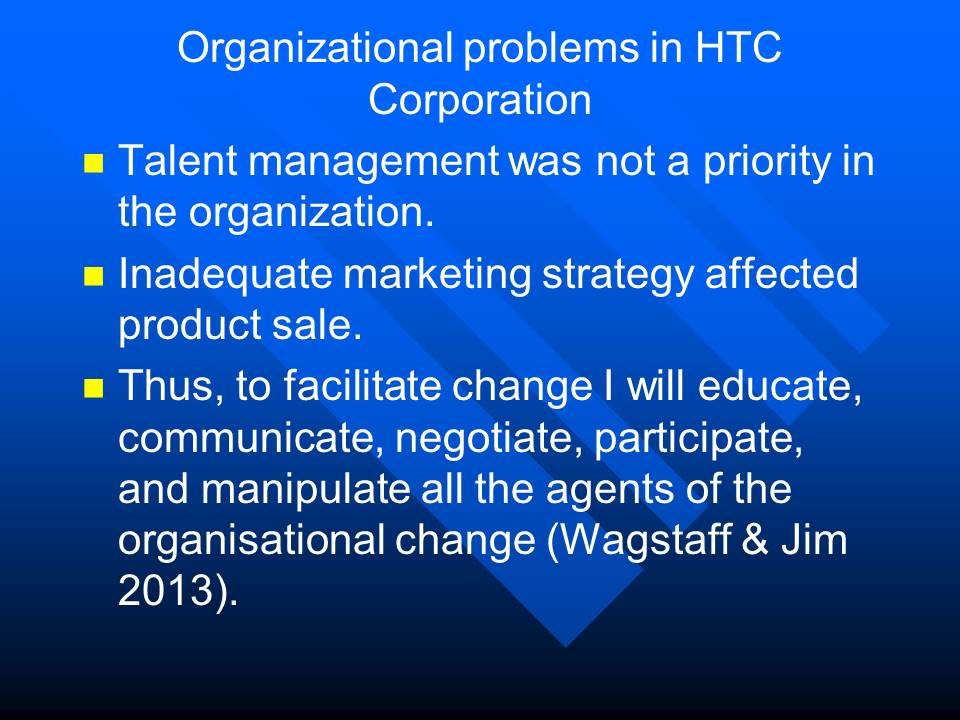
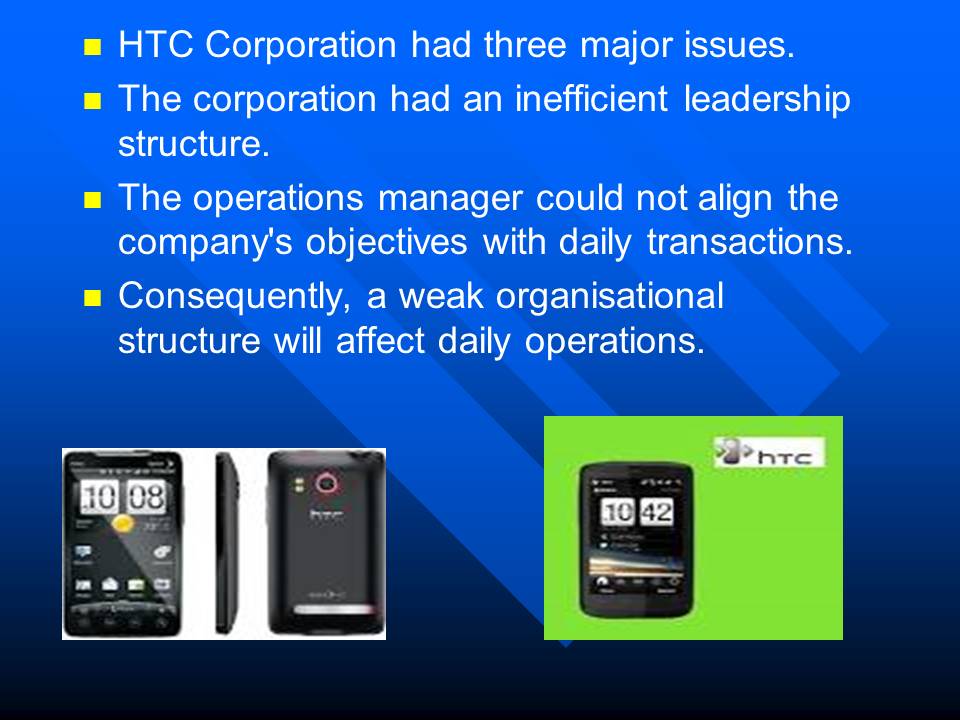

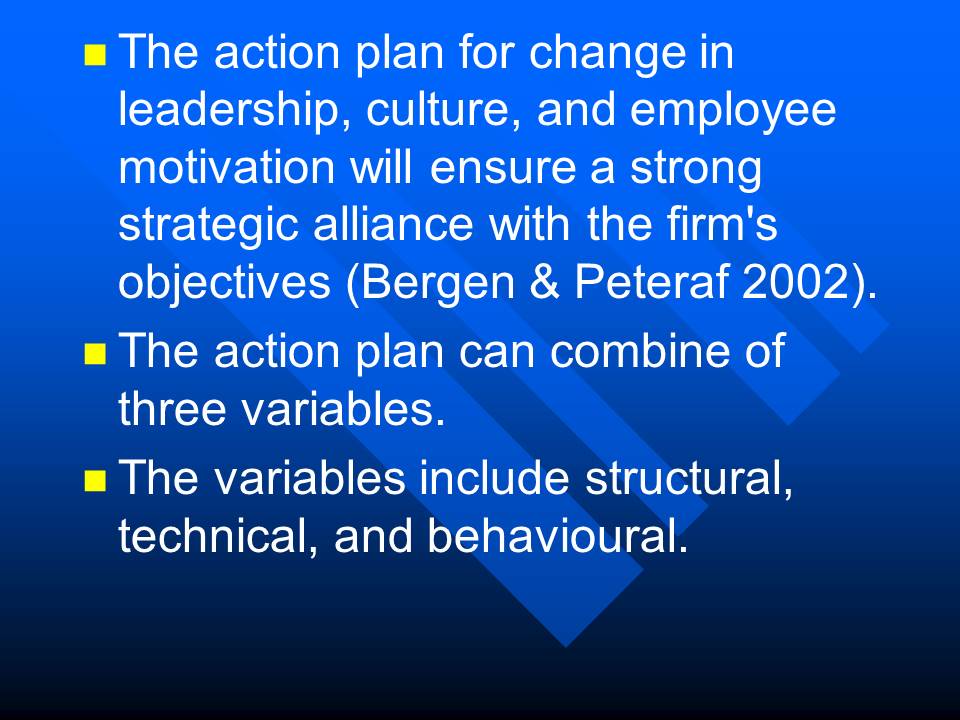
References
Bergen, M & Peteraf, A 2002, Competitor identification and competitor analysis: a broad based managerial approach. Managerial and Decision Economics vol. 23 no. 2, pp. 157-169.
Capron, L & Chatin, O 2008, Competitor’s resource oriented strategies: acting on competitor’s resources through interventions in facvtor markets and political markets. Academy of Management Reiew vol. 33 no. 1, pp. 97 121.
Triggs, R 2013, Is HTC a sinking ship? resignations, poor sales, and absent leadership suggest so. Web.
Wagstaff, J & Jim, C 2013, Insight: Peter Chou is he HTC’s savior or obstacle to revival? Web.